If your home is starting to feel out of control, or you want to prevent that from happening, it might be time to declutter toys. I’ve got you covered with the simplicity
This is not a guide about the best cute storage containers or fun solutions for hordes of stuffed animals. This guide is here to help you simplify and select open-ended toys. Less is going to be the key to a peaceful and organized home.
These ideas are not new and certainly aren’t original to me!
If you’re looking for more help with simplifying and simplicity
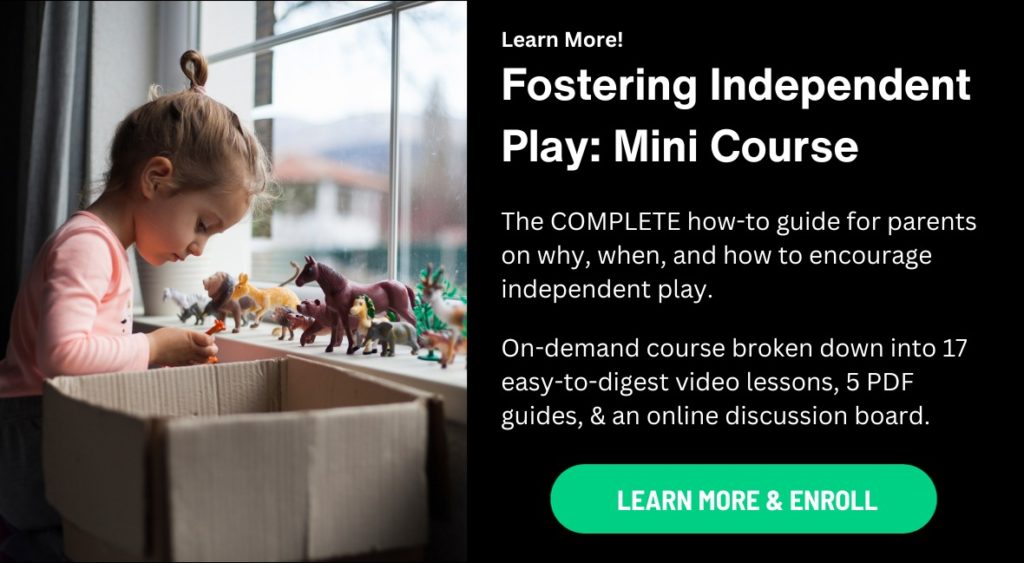
We get commissions for purchases made through links in this post. As an Amazon Associate, we earn from qualifying purchases.
Have toys taken over?
It is amazing how quickly kids’ toys can take over a house.
First, maybe it’s your kid’s bedroom, the playroom, and then the family room. Soon, every room in the house begins to look like a toy store. The collection grows with each Christmas, birthday, and outing with Grandma.

When kids have lots of toys, keeping the house clean and organized can be a struggle. There can be battles and power struggles over getting kids to pick everything up. Sometimes, parents stay up at night getting reorganized, only to have the house return to chaos the next day after all the bins get dumped out again. It can become an exhausting cycle, and parents sometimes give up on it.
And more toys are not better. More often, it overwhelms kids. Things get broken, pieces get lost, and toys go unused. Overcrowding leaves little space to play. It can feel very chaotic and out of control for kids. Often, when they start feeling out of control in one area of their lives, kids begin to manifest controlling behavior in other areas.
This is not what we want for them or ourselves. It is time to simplify and invite your kids into more profound, meaningful play with less.
How to Declutter Toys
First, gather all of your kid’s toys in one room and make a giant pile. This is going to work best when your kids aren’t around. You aren’t going to be throwing away their favorite things, but there might be quite a bit that your kids “Have to keep!” that really should go.
You might be surprised by how many toys you genuinely have. Seeing them all together might help you let go of a few more things.
And now the toy declutter begins. Any toys that are not broken or missing pieces can be donated or given away through a Facebook Buy Nothing group.
Things to get rid of – Simplicity Parenting Toy List:
1. Any toy that is broken or missing pieces
These toys simply take up space and need to go.
2. Active toys
These are toys with batteries, flashing lights, and noise. Often, they’re the toys that are annoying for adults.
These toys “play” themselves and don’t leave much for our kids to do. Thus, they limit imagination, interrupt focus, and aren’t that engaging. Kids might only play with them for a few minutes at a time.
3. Overly specific toys
These are very detailed toys with a single purpose or way to play with them. For example, think of a very detailed toy car wash. It’s super cute, but all the details give it a very prescribed and singular use. There are no creative ways to use it, so kids become disinterested after a few minutes.
Parents can donate these toys to make space for options that invite deeper play. Something like a bucket of water and some scoops would allow kids to do more with less.
4. Branded toys
These are toys based on movies, TV shows, or famous characters. They are often cheap and junky, designed to attract our kids’ attention and get us to buy more by featuring popular characters.
Branded toys come with stories our kids already know and don’t leave as much room for kids to create their own stories.
Branded toys can also be very gendered, limiting our kids’ play. The National Association for the Education of Young Children has an excellent summary of some research on gendered toys.
Note: There are going to be exceptions. Your kid might love Mickey or the Hulk, and that’s ok. It’s good to be flexible. I’m not asking you to throw away their favorite things.
5. Duplicates
Again, more is not better. Having multiples of a toy simply creates a more cluttered home. Please get rid of it to free up play space.
5. Aggressive toys
These are toys like very detailed toy guns. While it is perfectly acceptable and totally normal for kids to participate in weapons play, we do not need to give them weapons. They will find things to use as needed.
7. Toys that are not age-appropriate
Maybe you haven’t decluttered toys in a while and have toys around that your kids have outgrown, like baby items. These can be eliminated.
Or perhaps you’ve been gifted things your kids haven’t grown into yet. We can store these toys until your kids are ready for them. Everything doesn’t need to be out at once.
These guidelines will make it easy and painless to declutter toys!
What sorts of toys DO we want for our children?
We want open-ended toys. These are toys that are not overly specific. They can be played with in various ways by children of multiple ages. If 10 children were given the same toy, they would all use it slightly differently.
These are passive toys. Unlike those toys with batteries, they require our children to interact with them. The focus is on what the child can do instead of what the toy can do.
Think of something like a set of wooden blocks. Kids can build with them, line them up, make a corral for toy animals, take them to the kitchen, and use them as play food. We’ve all seen the baby that picks up a block and uses it as a pretend phone.
Another example would be some play silks or some fabric. Silks can be tied on to make a cape, used to wrap up a baby doll, or used to create a fort.

These toys require imagination and innovation on the part of our kids. Kids must decide what to do with them and how they use the toys, which can change from day to day. This can help kids play independently for long periods.
Finally, open-ended toys work for a whole range of ages because kids can do many different things with them. A baby can grasp silks or blocks, and a six-year-old can still pretend with silks and build with those same blocks.
- Open-ended toys don’t even have to be “toys”! You can create lots of play activities using everyday objects from around your house.
Use this criterion to help you select toys when you next head to the toy store. Or consider providing your kids with everyday objects that can act as open-ended toys, such as cardboard boxes, blankets, sticks, rocks, Tupperware containers, etc.
Rotate Toys
Once you’ve decluttered your toys, you might still have a giant pile of high-quality toys.
What do you do?
Simply put out a manageable amount of toys at a time!
Take the rest, pack them away, and put them out of rotation. Put the toys in bins and place them where they cannot be accessed and pulled back out by your kids. When you need something new, you can rotate something in and rotate something out.
If your kids constantly struggle to pick up toys, it might be that you have too many out at once. Providing our kids with hundreds of toys and then expecting them to clean them all up is a developmentally inappropriate expectation.

A helpful rule of thumb is only to have out the number of toys your kids can pick up in under 3 minutes. This makes clean-up manageable for them. By doing this, you are setting our kids up for success.
Remember that for kids under age 6 is can be helpful for you to pick up toys with them.
Note: this DOES NOT mean that you are the one picking up all the toys. Having your kids participate in clean-up from when they are babies will make this a habit early on.
Toys to Have Out at Any Given Time
We want our kids to have access to a variety of open-ended materials. When deciding what to have out at one time, it can be helpful to think in terms of categories or areas the same way your child’s preschool teacher might do.
Areas/categories
- Building: wooden blocks, duplos, legos, magnet tiles, rainbow stacker
- Art: paper, crayons, markers, scissors, glue, blue painter’s tape, easel
*Note: only have out a few crayons, a few markers, and a few pieces of paper. Your kids can clean up the area easily, and you can restock as needed. - Dramatic play and imaginative play: baby dolls, silks, play kitchen, play food, stuffed animals, cars, realistic toy animals, doll house
*Avoid dramatic play sets with tons and tons of pieces or lots of cheap small plastic pieces. - Sensory play: water or sand with small scoops, playdough, slime
- Library: books, reading pillows
*Keep out only a few books and have them in a bin or front-facing bookshelf your kids can access independently. This will make it easy for them to see the various books, treat them carefully, and put them away when they are done. - Fine motor: beading activities, wooden stackers, puzzles, stickers
*Fine motor activities promote the coordination and dexterity of the small muscles of the wrists and hands. Any activity involving moving or grasping small objects aids in this. These skills are needed for everyday activities like eating, dressing, manipulating objects, and writing. - Favorite items: things that your kids love and use on a daily basis
*By rotating toys, you might see your kids take an interest in things they previously rarely played with.
You can then pick one high-quality item from several categories and store the rest.
For example, you could have out wooden blocks, paper, and crayons, a baby doll, 2 or 3 silks, some cars, playdough, a few books, a few wooded puzzles, and a few favorite stuffed animals.
Items from each category can be rotated in and out when your kids need something new.
Keep toys where kids can easily access them independently and choose what they would like to play with. This will build their independence and eliminate the need for them to come and find you to get things out for them.
How can we keep from accumulating too much?
We can change our own thoughts about play.
When we hear the word “play” as adults, we think of toys. But remember: kids don’t need toys – toy companies need kids and constantly try to get us to buy things.
Kids will play with sticks, rocks, water, boxes, blankets, balls, pots, and pans. We can keep our shopping habits in check by knowing that our kids don’t need all the latest-greatest things and that simpler invites deeper play.

We can stop showing our love by buying toys for our kids.
As parents, we sometimes use toys to show kids they love them. We might feel guilty for the time they spend away from our kids, which drives us to buy more things.

Maybe this is you. Instead, turn off your phone, set a timer for 10 minutes, and sit down to spend that 10 minutes of uninterrupted time with your kids. That time is going to be way more important than anything you could ever buy for them.
We can give some guidelines to family looking to buy gifts for our kids.
Another reason we end up with a lot of stuff is gifts. These gifts may be great open-ended toys or not-so-great toys. Either way, they might be more than we need.
We want to find ways for family and friends to celebrate the holidays with us, so it’s good to give them some gift-giving guidelines.
Start asking for experience gifts instead of stuff. Maybe tickets to the zoo, aquarium, or movies, or an ice cream date with grandma.
If folks still want to wrap a gift, they can give something like a cake mix and plan a date to make it together with your kids.
Benefits of Simplicity Parenting
Taking the time to declutter toys will provide your kids with a manageable play space. It will help to create a peaceful atmosphere in your home. Your kids will have room to play, organize, make, and the ability to return things when they’re done.
Simple toys or loose parts will build your kids’ curiosity, focus, and problem-solving and provide them with a play-filled childhood.
Kids will play independently for hours, thus learning how to structure their own time and entertain themselves without needing screens or adults. These skills will make them motivated lifelong learners.
I hope this provides the motivation and guidance to help you on your path to simplicity
- Looking for some open-ended toy ideas? Check out these open-ended play activities


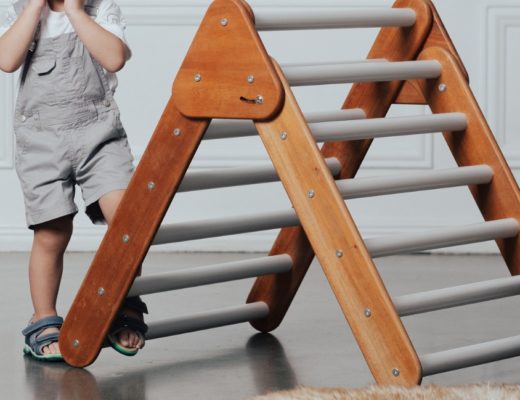
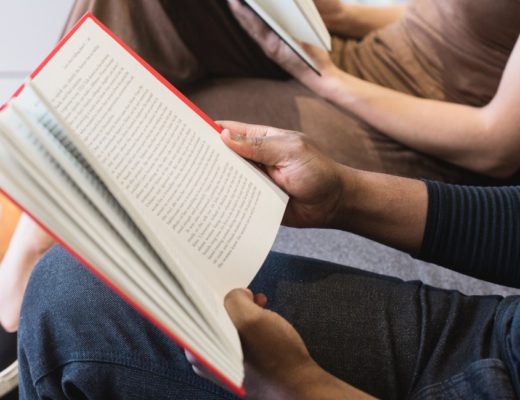
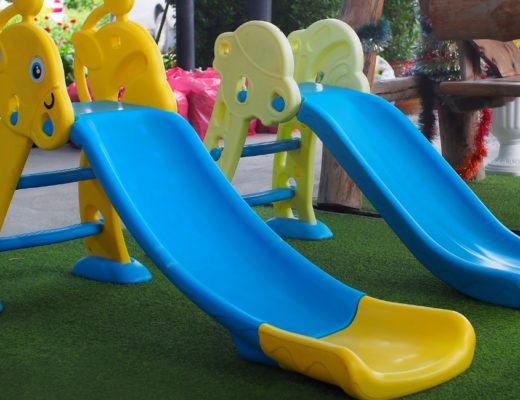
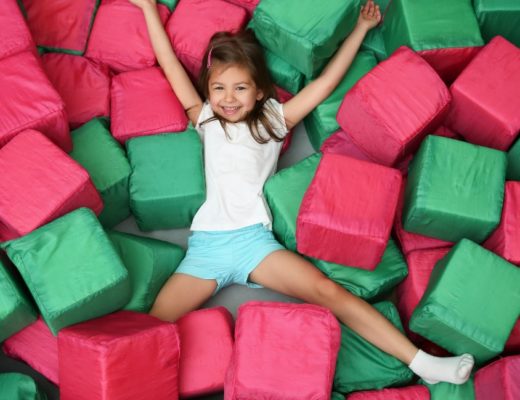

No Comments